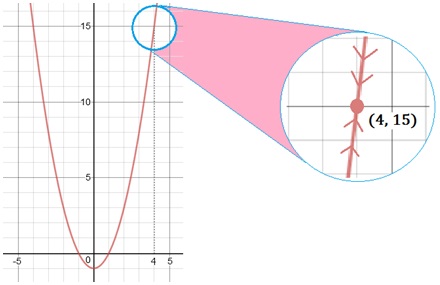
Limits and Continuity
One way to recognize continuous motion is simply by looking at a graph. Often, if the curve appears to show fluid movement without any holes or jumps, it represents continuous motion. In other words, the function that created it is a continuous function.

But appearances can be deceiving. Even a curve that looks as smooth as silk could have a break or two if you zoom in closely enough. So how can you tell if a function actually is continuous or not?
We can determine continuity by taking a limit. A limit is a way of figuring out what value a function is approaching. If the function is approaching the value we expect it to at a certain point, then the function is continuous there.
Take a look at this question:
What is the value of f(x) = x2 − 1 at x = 4?
Easy, right? Just plug in 4 for x and you’re done: f(4) = 42 − 1 = 15.
But now look at this question:
What is the limit of f(x) = x2 − 1 as x goes to 4?
To answer this question, we need to look at x-values that are close to 4, but not 4 itself. We can plug in a whole bunch of values and put them on a table for easy viewing:
| x | f(x) |
| x | f(x) |
| 3.5 | 11.25 |
| 4.5 | 19.25 |
| 3.9 | 14.21 |
| 4.1 | 15.81 |
| 3.95 | 14.6025 |
| 4.05 | 15.4025 |
| 3.99 | 14.9201 |
| 4.01 | 15.0801 |
| 3.999 | 14.992001 |
| 4.001 | 15.008001 |
Notice that we’re approaching 4 from both sides. That’s important-- there’s always a chance that one side will tell a different story from the other. But we can see that in this case, both f(x) columns are approaching 15. If we continued and plugged in numbers even closer to 4 (i.e., 3.99999, 4.000001), we would get function values even closer to 15.
It also doesn’t hurt to check this trend on the graph:

The graph of f(x) = x2 − 1 supports our conclusion; both sides are clearly approaching the y-value of 15. We now have all the evidence we need.
The limit as x goes to 4 of f(x)= x2 − 1 is 15.
Or, expressing this in math terms:
The “lim,” as you’ve probably guessed, stands for “limit,” and the “x → 4” underneath it tells us where x is going.
Because the limit as x goes to 4 of f(x) [that is, f(x)] happens to be the same as f(4), we can now officially say the function f(x) = x2 − 1 is continuous at x = 4.
To put this more generally:
If f(x) = f(c), provided the values exist, then f(x) is continuous at c.
Continuous function values are going to prove very important as we explore the topics of calculus.
Here’s a tip: Polynomial, rational, exponential, logarithmic, and trigonometric functions are all continuous at every point where they’re defined. That should save you a heap of trouble.
Since x3 + 4x is a polynomial function, it’s continuous everywhere. You can find the limit simply by plugging in the number.
= (−3)3 + 4(−3) = −27 − 12 = −39
Limits are pretty easy to define from a conceptual standpoint. Sometimes, though, you might encounter a more formal definition of the limit. So for all you fancy types out there, here's another look at the concept:
If, for every ε > 0, you can find a δ > 0 so that |f(x) − L| < ε as long as |x − a| < δ, then f(x) = L.
What all this math-speak is trying to say is that if you pick any small value for epsilon (the little "ε" thing), let's say 0.001 for example, you can find a neighborhood of x-values surrounding your a where the values of f(x) all come within 0.001 of the limit L.
Let's try this out with f(x) = 5x − 3 and a = 1. It's pretty obvious the limit here is going to equal 2, but let's justify that formally:
|(5x − 3) − 2| < ε
|5x − 5| < ε
5|x − 1| < ε
|x − 1| < ε/5
There you have it. Pick an epsilon, divide it by 5, and you've got the delta (the fancy "δ" thing) you need to satisfy the inequalities. If you pick ε = 0.01, then δ = 0.01/5 = 0.002; this means the value of f(x) will fall within 0.01 of 2 (that is, between 1.99 and 2.01) when the x-value lies within 0.002 of 1 (that is, between 0.998 and 1.002). We have just proven (5x − 3) = 2.
Practice
Find the following limits.
1.
2.
3.
4. Use the formal definition of the limit to prove .